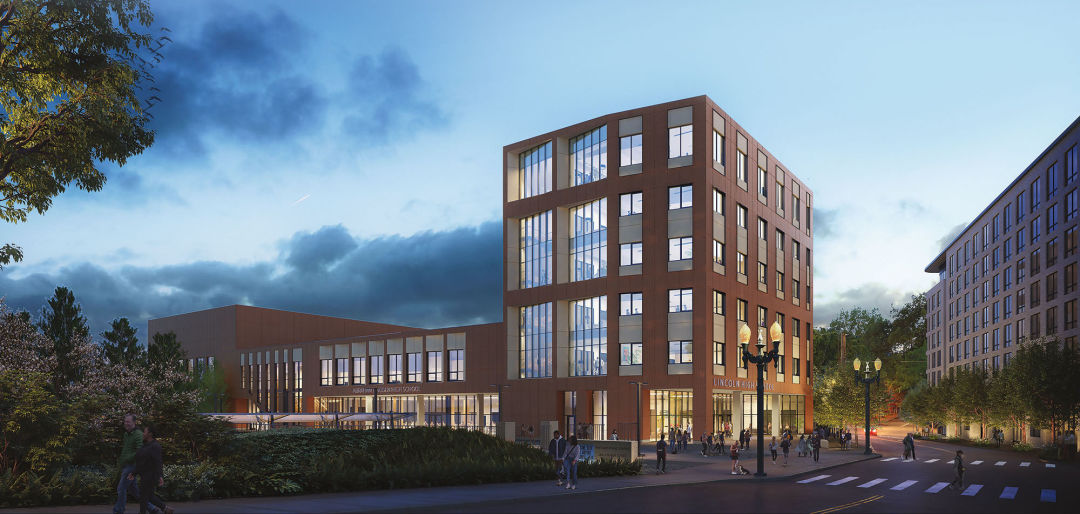Lincoln High School Is Getting a Sparkling New Look

Image: Courtesy Bora Architects
In 2022, Lincoln High School will open a brand-new $245 million, six-story, 280,000 square foot building, paid for by a 2017 school bond measure. (Plans for seven stories were scrapped due to budget overruns.) The new structure—which will include a glass-walled library, product design lab, and public art sourced through the Regional Arts & Culture Council—is in its final design stages before pilings go in in February. We talked to Bora Architects’ Chris Linn to hear about the trials and triumphs of designing a high school for the future.
What are some challenges you’ve faced so far? The site’s within the Central City Design Review District of Portland, and this is really the first and only high school within Portland Public Schools subject to that kind of overlay. The goal of those rules and regulations is to make buildings that are really pedestrian-friendly, have a great sidewalk presence, have a lot of glass and transparency.
Are there any particular schools you looked to as models? This is a very urban school, not unlike something you might find in Chicago or New York. In New York there’s Stuyvesant High School, for example—it’s 16 or 18 stories tall. It’s a bit of an older-city, East Coast model applied here in Portland for a vertical school.
You’ve been designing schools for 30 years. Have you done much work with urban schools? I would say this is probably the first real downtown urban school we’ve done. It’s not common on the West Coast. The other interesting thing is, because it’s a vertical school, we’re interested in turning that into a story about health and wellness, so we’re really designing this thing to encourage people to use the stairs. It’s going to be a great experience moving up and down the stairs, seeing downtown and Mount Hood and the West Hills.
What’s different about designing a school? A modern high school is like a hill town in Italy. There’s 2,000–3,000 people in the building at any one time, and the programs of modern high schools are really rich and complex. There are theaters, science labs, classrooms, offices, culinary arts. There’s sort of one of everything.
Did safety concerns—say, the spike in school violence—factor into the design? Physical design influences included limiting potential points of entry, organizing the building for easy passive surveillance, creating clear lines of sight both inside and outside, and doing all of this while maintaining a sense of openness, connection to the neighborhood, and meeting all of the City of Portland’s Active Use criteria.
What problems with the old space are you trying to fix? It was built to an older seismic standard. The mechanical systems are all outdated. It gets too hot, it gets too cold, too stuffy. There’s all those water issues within PPS you’ve heard about. So we’re designing the new building to a higher seismic standard. Things like the gym and the cafeteria and the kitchen are designed to be an emergency shelter for the entire community.
If I asked you to name the most beautiful high school in the country, what would come to mind? This is a fun one. It’s a private school in California called Crystal Springs Uplands School. They took this classical building that was built for a wealthy banker, the old Crocker mansion. The ceiling in the dining room was imported from a palazzo in Italy. Mrs. Crocker had a hat room in her bedroom. They turned that into a classroom and left all the hat cabinets in the space. It’s the least institutional, most unique, quirky, but really effective school I’ve ever been in. If there’s any challenge in building modern schools, it’s deinstitutionalizing the architecture. And there’s just certain standards of modern construction and certain district standards that private schools don’t have to deal with.




